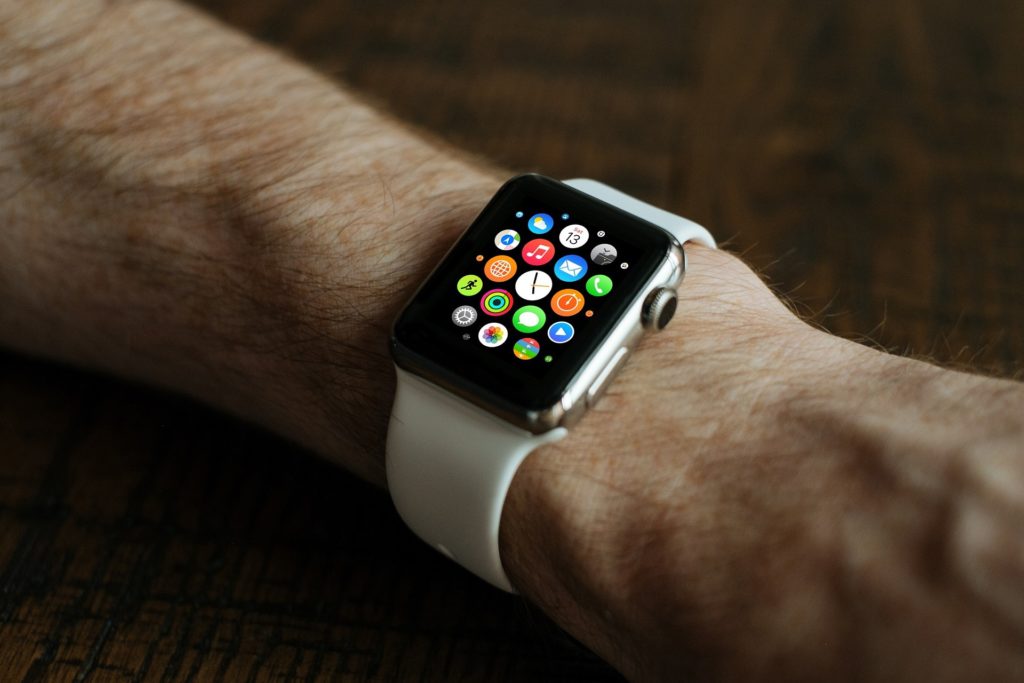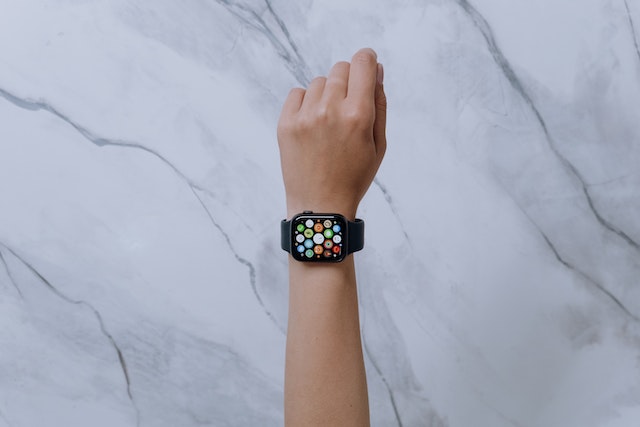Now you can listen to this article!
Are you a classic type of person or a cutting-edge techie? Watches are exceptional because they give the wearer functionality and style in the same accessory. A watch says a lot about a person, and the type of watch you wear should match your needs and personal preferences. Having said all that, there is an option that is better than the other when it comes to traditional vs. smartwatches.
Smartwatches are a better option than traditional watches because they are more functional:
- As phones
- At computer processing
- Come in various designs
- Have internet connectivity
A watch is a beautiful and functional accessory that has been popular for many decades. However, with the advent of internet connectivity and computer processing in a smartphone, smartwatches outshine traditional watches. They are a better option for virtually everyone. Read on to find out more about conventional watches vs. smartwatches and which one is better.
Smartwatch Is Better Than Traditional Watch
Wearable accessories have been popular for hundreds of years. However, only in the past decade have innovative wearable accessories become popular. The standard watch features help users tell the time accurately, the day of the week and month, set alarms, time themselves with a second hand, and even use the pressure gauge for diving and the tachometer for speeds. But smartwatches have much more to offer.
Smartwatches have all of the features of a traditional watch plus the unlimited universe of knowledge on the world wide web.
Unlike traditional watches, smartwatches connect to the internet and your phone and act as an extension of your cellular phone. They can also look like digital or traditional watches in terms of style. A conventional watch can’t compete with the style and functionality of a smartwatch for many reasons.
Designs of Both Traditional and Smartwatches
The surprising thing about smartwatches is that they get made in a variety of designs. Traditional watches get made in about nine different styles. However, all conventional watch styles are available in the high-tech smartwatch model that connects to your cellular phone and the internet.
The most popular designs of watches that also come in a smartwatch option are listed below:
The Classic Pocket Watch
The pocket watch is just about as traditional as watches come. You can get a smartwatch in a pocket design with a chain that ties off neatly to the edge of a pocket in a three-piece suit or nicely tailored vest.
The chain is attached to the smartwatch in the same manner that the wristband would get hooked. Then, the watch dangles and is stored in the pocket in which the chain gets connected. The smartwatch could also get an upgrade with a faceplate if you are using it as a pocket watch.
Wrist Watch
The typical way that a watch is worn in the world today is on the wrist with either a band that holds the watch in place made of:
- Metal
- Leather
- Silicone/rubber
A wristwatch is also ordinary on a smartwatch design. It is an excellent way of keeping your notifications, time, and incoming messages and calls at an easy-to-see line of sight during the day.
Dive Watch
Some smartwatches also come customized as dive watches that are meant for underwater use. Divers who submerge under the water are putting their bodies and their watches under pressure. They also need a watch that won’t move around much on a rubber/silicone band.
The waterproofing on smartwatches is already pretty decent. Still, some are made for underwater use on a regular basis, more than the occasional splash from a glass of water.
The faceplate is also large and easier to read with contrasting colors and backlighting so that divers won’t become disoriented. There might even be a widget on the home screen of the watch for depth as the diver goes down further in the water.
Features of Both Traditional and Smartwatches
A traditional watch has many features that help users navigate the world. However, smartwatches contain all of these features, plus:
- Computer processing
- Internet connectivity
- Cellular service
The complete list of features that both traditional and smartwatches have are listed below:
A Functional Second Hand
The second hand is usually larger and colored differently than the background of the faceplate so that it is easily identifiable. The needle is more petite and moves faster in a ticking or fluid motion, counting the seconds in each minute.
On a smartwatch, you have the option of displaying either a digital clock design or a traditional clock face. The clock face is designed on the smartwatch with a minute and second hand. The second hand is also capable of being used as a stopwatch or dual timer for changing timezones.
Do You Have the Date?
A miniature calendar is a helpful feature that shows up on the back faceplate of a watch that shows the:
- Day of the week
- Month
- Date
The date is set with a knob on the side of the watch.
The date is usually available as a background image or as an app for the calendar on a smartwatch. However, there is a setting that lets you display the day, month, and year as digits like a traditional watch.
Dual Time So You Can Be In Two Time Zones At Once
Having dual time on a watch means that you have two different times on one watch face. The idea is that double-time gets used for those who travel and need to set the local time and their home time zone on the exact same watch.
The dual time feature is a handy feature for travelers who fly through different time zones constantly.
Smartwatches have this function built into their design. You can have the option of displaying any time in the world with the world clocks app or simply alternate between several different timezone watches with a swipe of your hand.
Setting Multi-Functioning Alarms
Setting the alarm is an essential and valuable function on a traditional watch. The alarm is usually softer in volume than other alarms. Still, it is excellent for waking you up or setting reminders throughout the day.
The alarm of your smartwatch is simple and similar to the traditional watch. The only difference is that a smartwatch has many different alarm options for:
- Sounds
- Volume
- Vibration
- Time
You could have several alarms set at the same time and never need to reset after one of them goes off. There are usually a limited number of notices on a traditional watch or traditional digital watch, such as one or two at a time.
How Smart is Your Lap Timer?
Timing tasks and other things on the fly is an excellent feature for those involved with sports or other repetitive tasks. The lap timer on traditional watches is started and reset with the buttons on the side of the faceplate.
The lap timer of a smartwatch is capable of timing you on the run and stopping when your motion stops. Because of the tachometer and other biometric data, the smartwatch lap timer integrates with a workout sensor and heartbeat monitor to give you detailed statistics of a workout.
You just can’t get that functionality with a traditional watch.
Features of Smartwatches Only
Traditional watches are great with these many features listed above. However, a smartwatch includes all of these features that a conventional watch boasts, plus more. The complete list of features most used on a smartwatch is detailed below:
Notifications
One of the best parts about having a smartwatch is instantaneous access to social media and other application notifications. Emails and messages, missed calls are all alerted on your wrist with a:
- Chime
- Vibration
- Light
- Combination of the three alerts
The smartwatch has two different types of notifications; those mirrored from a connected device and those specially made for smartwatches. Your smartphone needs its own SIM card and cellular connectivity for these notifications specially tailored for smartphones.
Suppose your smartwatch has the SIM car and cellular service. In that case, it can be used as a standalone device without being tethered to your smartphone. The connectivity of a smartwatch means that you are in constant contact via phone, email, or text message and social media even when you don’t have your phone.
Apps Work On Smartwatches Too
You can play games, send emails, get social media notifications, and use any available app on a smartphone on your smartwatch. The advent of GPS, SIM card capability, and cellular service on a smartwatch make them like mini smartphones that connect to the internet and do everything you come to expect from a computer.
Some of the best apps for a smartwatch include:
- Payment: Those apps that allow you to pay with contactless payments linked to a Paypal or bank account are excellent when you are in a crowded area, need to pay quickly, or don’t want the risk of germs and bacteria on your hands. Payment apps are linked to your account and are safe and reliable ways of paying for things like travel, food, and services quickly and conveniently.
- Fitness: Many fitness apps include step counting, heartbeat monitors, and GPS of your progress across a trail or roadway. These apps break down and allow for sharing of your progress on social media or with friends.
- Games: It might seem silly, but you can play games on your smartwatch. Some are less entertaining than others. However, in that incredibly dull situation, you will be glad you had a game to keep you distracted.
- Communication: Phonecall, messaging, and social media apps are all available on the smartwatch device. The notifications are much more visible and keep you connected wherever you go.
- Safety: Some apps have GPS for safety that includes crash monitoring while driving, intelligent check-ins with the user’s biometrics, and other features that help keep people safe and connected with their loved ones. The fact that phone calls can get made from a watch connected to your body is a safety feature that can’t be overstated.
Health and Workout Features
Smartwatches are great for those who want to keep tabs on their health and wellness. The main benefit of the smartwatch is that it can get used as a step counter and a heartbeat monitor. The heartbeat monitor on a smartwatch is incredibly sensitive and reads the pulse at your wrist with excellent precision.
These devices also read blood pressure and even determine your fitness level based on data from multiple workouts.
Also, the tachometer reads the gait of your step and learns your step totals as you go about your day. The tachometer of a smartwatch will even read certain exercises like bicycling, jogging, and exercising in a gym so that you can count calories, steps and keep a detailed diagram of your fitness at any given time.
With the advent of the smartwatch, many fitness apps have sprung up, but the main ones delivered by the smartwatch producers (Samsung and Apple) are generally considered the best and most accurate.
Sleep Trackers
Although this category of a smartwatch seems like it is something out of a science fiction movie, sleep trackers are great tools for discovering your sleep patterns. You might have wondered why you sometimes wake up feeling refreshed, and other days you don’t.
A sleep tracker on your smartwatch reads your body movement and analyzes your deep sleep patterns to give you a detailed diagram of your sleeping habits. This data about your sleep from the smartwatch is invaluable when you use it with other data such as what you had to eat, the time you went to sleep, and other facets of your evening routine before bed.
Sleep trackers work by simply remaining on your wrist while you sleep and then monitoring heartbeat and body movement. These data are plotted throughout the night and are discoverable in the morning upon waking for your perusal.
Calling and Messaging
All the notifications and apps on smartwatches are fine, but the real technological advance is in the cellular connectivity and addition of a SIM card in the smartwatch, making it a small cellular phone.
Those smartwatches with SIM cards and cellular service might even have their own cellular phone number and are capable of making and receiving phone calls even when they are not tethered to a cellular phone.
You’ll look like a spy taking into your wristwatch, but voice calls or voice to text for text messages are much easier when you have a smartwatch. The smartwatch has several simple communication apps which come up on the screen. Once chosen, the user speaks directly into the watch for voice messaging, phone calls, or voice to text.
The simplicity and ease of using a smartwatch for communication let users seamlessly update and contact people in their contact lists without having to remove their phone from their bag or pocket. This is also a sanitary option as cell phones have been found to have more bacteria on them than toilet seats.
GPS
One of the safest reasons that smartphones are a better option than traditional phones is the fact that they have GPS in them. Tracking your movement is important for a number of safety reasons, including:
- Keeping tabs on children
- Remaining safe in dangerous areas of cities
- Helping others guide you when you are lost
- Tracking through places that have changed
GPS also is the reason that you can update your maps with your progress around different places in real-time. Meeting up with people is easier and safer with GPS since the meeting happens exactly when it is meant to if you share your location with others.
Finally, GPS is a great tool for using and uploading workout progress and other recreational activities like hiking or exploring. Sharing your map of progress helps others find you or to visit the destinations you have pioneered.
What are the Disadvantages of a Smartwatch?
Even though a smartwatch is a better option overall, there are some disadvantages to owning a smartwatch that the traditional watch doesn’t need to contend with.
The problems with smartwatches seem to be with:
- The technology
- The battery life
- The psychological impact of constant stimulation from a device
Smartwatches are powerful tools and great accessories for those who decide to wear them. However, there are several disadvantages that you must be aware of before making your decision to buy a smartwatch.
Some of the most important disadvantages of using and wearing a smartwatch are listed below.
Updates
One thing that smartwatch users must constantly contend with is the manufacturer and publisher’s updates. If you do not have internet connectivity for a prolonged period of time or wait too long for the update, this could impact the usability of your smartwatch.
Also, updating is annoying and takes time away from your smartphone usage. You must wait while the updates are downloaded and then finalized on your smartwatch device.
The traditional watch does not need third-party updates or justification to continue working, it just requires winding or a battery, and it is good to go.
Battery Life
Battery life on a standard smartwatch is about one to two days. This means that every one to two days, you have to plug your smartwatch in and wait for it to charge up. The charging process from dead to 100 percent charged takes an hour or more for most smartwatches.
Charging your smartwatch is awkward because you can’t really put it on your wrist while it is charging. Therefore, using a smartwatch while it is charging is not as easy as using a smartphone while it is charging.
A traditional watch needs only a small hearing aid battery or a simple knob turn to start working. A standard wristwatch in the traditional style has a battery life of about two to five years.
In the end, battery life is a constant struggle for smartwatch owners, just like with their phone, so it is another thing you must remember to plug in and charge almost daily, a problem that traditional watch wearers just don’t need to worry about.
Constant Stimulation
Much has been researched and talked about with the overstimulation of our society. To name a few conditions, smartphones are blamed for:
- Depression
- Lack of concentration
- Insomnia
Conversely, the smartwatch is a lot more visible than a smartphone, and it is always attached to your person.
The constant notifications and stimulation from a smartwatch can be overwhelming for some users. Depression and anxiety of missing out are linked to overall notifications and smart device usage reported among average users in the United States.
Smartphone users swipe or otherwise touch their smartphones an average of 2,600 times per day. And these devices are not as easily accessible as a smartwatch. The smartwatch could increase the user’s interaction with the internet and notifications to increase this already staggering number of interactions with our devices.
Less Expensive Fitness Tracker Alternatives
Even if you want more than a traditional watch, there are more affordable calorie, step, and workout counters available on the market that are just as dependable as smartwatches. If all you are looking for is a way of counting steps, reading your pulse and blood pressure, and just generally keeping tabs on your health, a fitness band is a cheaper alternative to the smartwatch.
The fitness band comes in a variety of design options, and they all have some sort of fitness tracker for steps. Some even have the same blood[ressure and heartbeat sensor or sleep monitoring that the smartwatch has.
In Conclusion
Even though there are some negatives to the smartwatch, they increase productivity and help users stay connected with their friends and family. The numerous health tracking and logging benefits are amazing, and the connection to the internet and even cellular connection make the smartwatch one of the most powerful devices on the face of the Earth.
The power of the internet on your wrist is now a fashion trend. Smartwatches are a better option than traditional watches for many reasons. We hope that some of these reasons give you the insight you need to make an informed and good decision for your own watch needs.
Sources:
- https://sitn.hms.harvard.edu/flash/2018/dopamine-smartphones-battle-time/
- https://www.fhs.swiss/eng/battery.html#:~:text=Generally%20the%20lifetime%20of%20a,required%20by%20the%20different%20functions
- https://www.gadgetsnow.com/faqs/what-can-i-do-to-make-the-battery-of-my-smartwatch-last-longer/articleshow/77524528.cms
- https://technicles.com/advantages-disadvantages-smartwatches/
- https://ihpi.umich.edu/news/your-cell-phone-10-times-dirtier-toilet-seat-heres-what-do-about-it#:~:text=Scientists%20at%20the%20University%20of,bacteria%20than%20most%20toilet%20seats.&text=When%20toilets%20flush%2C%20they%20spread,coli.
- https://www.menshealth.com/fitness/a19543741/best-fitness-watches-track-workouts/
- https://whatphone.com.au/guide/most-used-features-of-smartwatches
- https://www.hsamuel.co.uk/webstore/guide/watch-buying-guide/
- https://www.grayandsons.com/blog/back-basics-what-is-a-dive-watch/
- https://thetruthaboutwatches.com/2019/12/traditional-watch-vs-a-smart-watch/





